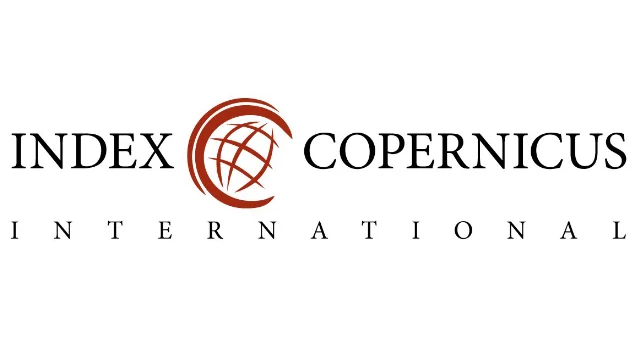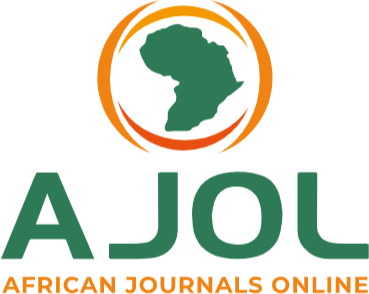Determination of pH and Hydroquinone Concentration in Selected Bleaching Creams Used By Some Students Of Delta State University Abraka
Keywords:
pH, Hydroquinone, Bleaching cream,, Melanin, Acid mantle, Skin cancerAbstract
The study was aimed at evaluating the pH and the concentration of hydroquinone in selected skin bleaching creams used by some students in Delta State University Abraka to ascertain their safety. Seven different bleaching cream samples obtained from the students were used for the experiment. The pH was determined using a calibrated pH meter while the concentration of the hydroquinone was detected using a UV spectrophotometer. From the results obtained, three samples; recorded pH of 4.11, 5.70 and 6.20 respectively which fell outside the pH range of the skin. However, the other four samples, BCS 1, BCS 3 BCS 5 and BCS 7 recorded pH of 5.30, 4.53, 5,20 and 4.90 respectively and fell within the pH range of the skin. The concentrations of hydroquinone in the seven samples analysed, ranged from 1.00% to 2.15% with only one of the samples, BCS 2. having a concentration of 2.15% that is above WHO regulation. However, two of the samples, BCS 1 and BCS 5 did not record any concentration of hydroquinone in them even though they were skin bleaching creams. While 86% of the bleaching creams analysed pose no safety threat concerning hydroquinone concentration, 43% of the bleaching creams pose safety concerns as they recorded pH outside the acid mantle (pH range of the human skin). It was therefore recommended that regulatory bodies should ensure that manufacturers adhere to standard practices.
Similar Articles
- Yakubu Azeh, Spectroscopic Characterization of Acetylated Wood Flakes and Its High-Density Polyethylene Blends , Communication In Physical Sciences: Vol. 8 No. 1 (2022): VOLUME 8 ISSUE 1
- Vivian Ifeoma Okonkwo, Gloria Chika Udeokpote, Uduak Bassey Essien, Ethanol Extract of Curcuma longa as a green corrosion inhibitor for carbon steel in solution of HCl , Communication In Physical Sciences: Vol. 8 No. 4 (2022): VOLUME 8 ISSUE 4
- Richard Alexis Ukpe, The Investigation of the Corrosion Inhibition Efficiency of Aqueous extract of Vernomia Amygdalina for Mild Steel In Various Concentrations of HCl , Communication In Physical Sciences: Vol. 10 No. 1 (2023): VOLUME 10 ISSUE 1
- Amaku James Friday, Victor Okezie Ikpeazu, Ifeanyi Otuokere, Kalu K. Igwe, Targeting Glycogen Synthase Kinase-3 (Gsk3β) With Naturally Occurring Phytochemicals (Quercetin and its Modelled Analogue): A Pharmacophore Modelling and Molecular Docking Approach , Communication In Physical Sciences: Vol. 5 No. 4 (2020): VOLUME 5 ISSUE 4
- Godwin Enin, GC-MS Profiling of Bioactive Compounds in Methanol Extracts of Spices Used in Ibibio Postpartum Healthcare , Communication In Physical Sciences: Vol. 12 No. 4 (2025): VOLUME1 2 ISSUE 4
- Gideon Wyasu, Batch adsorption of Hg2+ and As3+ ions in Hospital wastewater using activated carbon from Balanites aegyptiaca and Detarium microcarpum , Communication In Physical Sciences: Vol. 5 No. 4 (2020): VOLUME 5 ISSUE 4
- B. Myek, M. L. Batari, J. O. Orijajogun, M. A. Aboki, Synthesis and Characterization of Metal Complex of an Azo Dye Based on Acid Orange 7 , Communication In Physical Sciences: Vol. 5 No. 3 (2020): VOLUME 5 ISSUE 3
- Charles German Ikimi, Ijeoma Cynthia Anyaoku, Maryann Nonye Nwafor, Biomarker Potentials of Postmortem Vitreous Biochemical Parameters For Resolving Disputed Causes of Death by Drowning Using Animal Models , Communication In Physical Sciences: Vol. 12 No. 2 (2025): VOLUME 12 ISSUE 2
- Okoche Kelvin Amadi, Onyinyechi Uloma Akoh, Godson Chukwudi Eric, Adsorption Studies on the Inhibitive Properties of Aqueous Extracts of Theobroma cacao (TC) Leaves on Mild Steel in 1.0 M HCl , Communication In Physical Sciences: Vol. 9 No. 3 (2023): VOLUME 9 ISSUE 3
- Rakiya Haruna, Muneer Aziz Saleh, 222Rn activity concentration in outdoor air of Johor, Malaysia , Communication In Physical Sciences: Vol. 8 No. 2 (2022): VOLUME 8 ISSUE 2
You may also start an advanced similarity search for this article.



